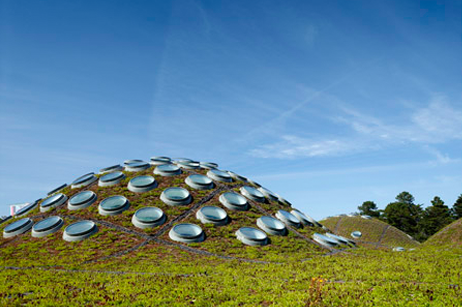California Academy of Sciences

The Academy is a single structure but contains multiple venues, including the aquarium, the planetarium, the natural history museum and the 4-story rainforest. In addition, there’s a 3D theater, a lecture hall, a Naturalist Center, two restaurants, an adjacent garden and aviary, a roof terrace, and an Academy store.
The building also houses the Academy science labs and administrative offices, including an extensive library and scientific archive consisting of more than 26 million specimens.
The Academy is now the largest public Platinum-rated building in the world, and also the world’s greenest museum. The Academy earned the platinum rating (highest rating possible) for Leadership in Energy and Environmental Design (LEED). This commitment to sustainability extends to all facets of the facility – from the bike racks and rechargeable vehicle stations outside the building to the radiant sub-floor heating inside the building to the energy-generating solar panels on top of the building!
From the basement to the roof of the Academy’s new building, the choices behind each element of construction reflect a commitment to energy efficiency, reducing the carbon footprint, and preserving the natural world.
-90% of all demolition materials were recycled
-32,000 tons of sand from foundation excavation applied to dune restoration projects in San Francisco
-95% of all steel from recycled sources
-15% fly ash (a recycled coal by-product), 35% slag in concrete
-50% of lumber harvested from sustainable-yield forests
-68% of insulation comes from recycled blue jeans
-90% of office space will have natural light and ventilation
-60,000 photovoltaic cells; 213,000 kilowatt-hours
-30% less energy consumption than federal code requirement
(http://www.calacademy.org)


